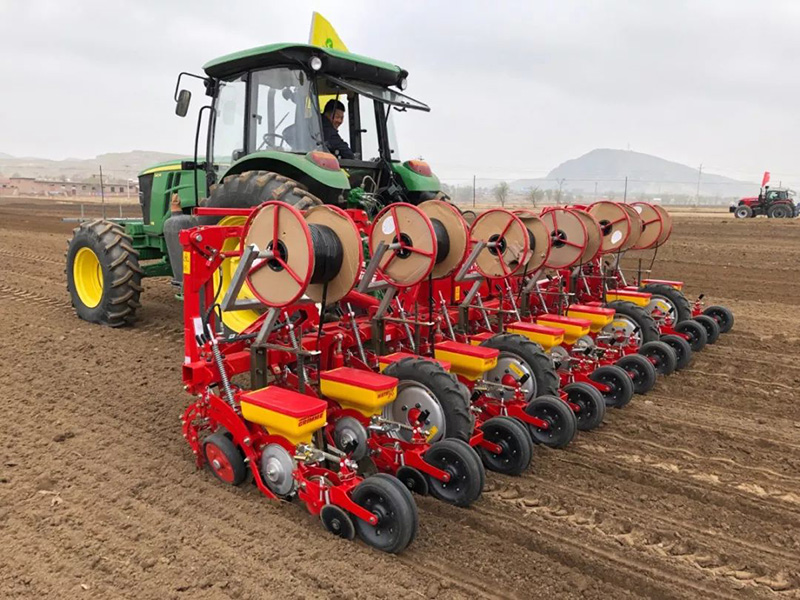Recommended Agricultural Machinery Combinations for Different Crops Rice Wheat and Corn
As global demand for food continues to rise, farmers around the world are under pressure to produce more with fewer resources. Mechanization has become a key driver of productivity, especially in developing regions where manual labor is still common. However, one-size-fits-all equipment rarely delivers optimal results. Different crops require specialized machinery or unique combinations of machines to maximize efficiency, minimize waste, and protect soil health.
As a Chinese manufacturer exporting agricultural machinery worldwide, we’ve seen firsthand how matching the right equipment to the right crop can transform farming outcomes. In this article, we explore recommended machinery combinations for three of the world’s most important crops—rice, wheat, and corn—and explain how these integrated solutions can save time, reduce costs, and increase yields.
Machinery Combinations for Rice
Rice farming is water-intensive and often involves transplanting seedlings into flooded paddies. Traditional manual methods are slow and laborious. Modern rice cultivation benefits from a specialized set of machines:
- Paddy Field Tractor: Compact and light to minimize soil compaction in wet fields.
- Rice Transplanter: Automates the planting of seedlings, ensuring uniform spacing and reducing plant stress.
- Combine Harvester for Rice: Equipped with special tracks and threshing systems to handle wet conditions without damaging grains.
- Grain Dryer: Essential for reducing moisture content and preventing post-harvest losses.
By using these machines together, farmers can cut planting time by up to 70% and harvesting time by 50%, while improving grain quality.
Machinery Combinations for Wheat
Wheat is typically grown in drier fields and requires a different mechanization approach:
- High-Horsepower Tractor: Handles plowing, seedbed preparation, and heavy implements over large areas.
- Seed Drill or Planter: Ensures uniform seed depth and spacing for better germination.
- Combine Harvester for Wheat: Integrates cutting, threshing, and cleaning of wheat heads into one pass.
- Straw Management Equipment: Balers or straw choppers to handle residues and prepare fields for the next crop.
Combining these machines streamlines the process from tillage to harvest, reduces fuel and labor costs, and allows farmers to plant and harvest within optimal windows.

Machinery Combinations for Corn
Corn requires wider row spacing and different harvesting techniques:
- Medium to High-Power Tractor: For land preparation and pulling larger implements.
- Precision Corn Planter: Delivers accurate seed placement and fertilizer application in one pass.
- Corn Harvester or Combine with Corn Header: Designed to handle tall stalks and separate kernels efficiently.
- Silage Equipment (Optional): For farmers producing silage from corn stalks.
Using an integrated corn machinery chain improves seed placement accuracy, reduces input waste, and speeds up harvest while preserving kernel quality.
Benefits of Integrated Machinery Chains
Combining the right machines for each crop creates a “mechanized chain” where each step supports the next. Benefits include:
- Time Savings: Coordinated machines reduce downtime and bottlenecks.
- Cost Efficiency: Shared tractors or power units across multiple implements lower capital investment.
- Yield Improvement: Uniform planting and timely harvesting reduce losses and boost productivity.
- Sustainability: Reduced soil compaction, better residue management, and precise input application protect soil health and the environment.
Frequently Asked Questions
Q1: Can one tractor work with different crop implements?
A: Yes. Many modern tractors are compatible with multiple implements, making it cost-effective to switch between rice, wheat, and corn equipment.
Q2: How can small farms afford specialized machinery?
A: Farmers can consider cooperative ownership, rental services, or modular machinery that adapts to multiple crops to spread costs over several seasons.
Q3: Are Chinese agricultural machines reliable for export markets?
A: Reputable Chinese manufacturers meet international standards, provide spare parts, and offer training and after-sales service to ensure long-term reliability.
Q4: What maintenance is required to keep machinery running efficiently?
A: Regular inspection, timely lubrication, and proper storage between seasons significantly extend equipment lifespan and maintain performance.
Q5: How does precision technology fit into these combinations?
A: GPS-guided tractors and planters improve accuracy, reduce overlap, and optimize input use, further enhancing the benefits of mechanized chains.
Implementation Tips
When planning a machinery combination, farmers should assess their soil type, field size, labor availability, and local climate. Matching machine capacity to farm scale avoids underuse or overinvestment. Working with suppliers who understand both the equipment and the agronomy of different crops is essential for success.
Case Study Eastern Europe Farm Transition
A mid-sized farm in Eastern Europe growing wheat and corn recently adopted a combined machinery solution sourced from our company. By integrating a high-horsepower tractor with interchangeable planters and headers, the farm reduced operating costs by 35% and harvested crops two weeks earlier than previous seasons, leading to higher market prices and improved cash flow.
Looking Ahead Smart and Sustainable Mechanization
Future machinery chains will integrate smart sensors, autonomous operation, and renewable fuels. For example, autonomous rice transplanters can work day and night, while precision planters with variable-rate technology can optimize seed and fertilizer use for corn and wheat. Farmers adopting integrated solutions today will be better positioned to upgrade to these innovations tomorrow.
Conclusion
Selecting the right combination of agricultural machinery for each crop is no longer optional—it’s essential for competitiveness. Rice, wheat, and corn each require different mechanization strategies, and tailored machinery chains offer dramatic improvements in efficiency, cost savings, and sustainability. As a Chinese manufacturer exporting high-quality farm equipment worldwide, we are committed to helping farmers design integrated solutions that deliver results in the field and on the balance sheet.
5. Get Your Personalized Solution Now
→ Call the selection hotline: +86 158 5359 8030 (also supports accessory customization inquiries).








